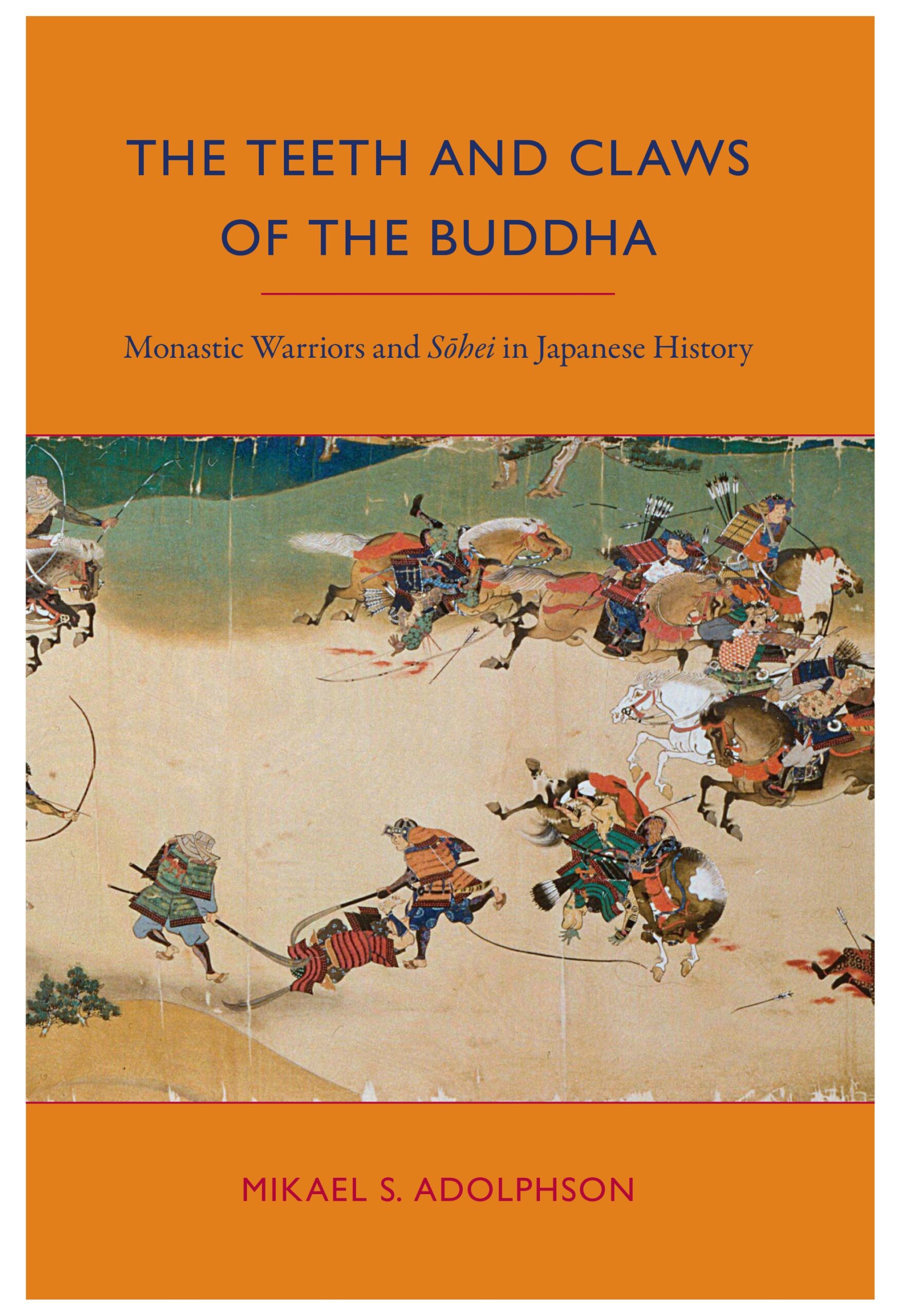The Teeth and Claws of the Buddha: Monastic Warriors and Sohei in Japanese History
- About the Book
-
Japan’s monastic warriors have fared poorly in comparison to the samurai, both in terms of historical reputation and representations in popular culture. Often maligned and criticized for their involvement in politics and other secular matters, they have been seen as figures separate from the larger military class. However, as Mikael Adolphson reveals in his comprehensive and authoritative examination of the social origins of the monastic forces, political conditions, and warfare practices of the Heian (794–1185) and Kamakura (1185–1333) eras, these “monk-warriors”(sôhei) were in reality inseparable from the warrior class. Their negative image, Adolphson argues, is a construct that grew out of artistic sources critical of the established temples from the fourteenth century on.
In deconstructing the sôhei image and looking for clues as to the characteristics, role, and meaning of the monastic forces, The Teeth and Claws of the Buddha highlights the importance of historical circumstances; it also points to the fallacies of allowing later, especially modern, notions of religion to exert undue influence on interpretations of the past. It further suggests that, rather than constituting a separate category of violence, religious violence needs to be understood in its political, social, military, and ideological contexts.
- About the Author(s)
-
Mikael S. Adolphson, Author
Mikael S. Adolphson is Keidanren Professor of Japanese Studies at the University of Cambridge .
- Reviews and Endorsements
-
- A truly fascinating book that deserves the close attention of any reader interested in Buddhism and war.
—Religious Studies Review - We should be grateful to the shortcomings of previous scholarship for the opportunity given Adolphson to write a book that should be required of all students of Japanese history, especially as a text on historical methodology. It is probably the most useful introduction to the problems of writing history since Josephine Tey’s The Daughter of Time.
—American Historical Review - What Adolphson has done to the word sohei is not unlike what his intellectual master Kuroda Toshio did for the word Shinto. He has exposed the limits of the term’s historical relevance, revealed its eighteenth-century origins, underscored its ideological inflections, and shown how it can obscure rather than reveal the varied and complex historical subject it seeks to name. In doing do, Adolphson has not only changed the way that historians of Japan will look at something we long thought we knew, but will also allow future historians to pose questions we never even thought to ask.
—Monumenta Nipponica - An innovative and insightful study of monk-warriors that is likely to become the definitive treatment of this topic.
—Harvard Journal of Asiatic Studies - Adolphson does an outstanding job of re-incorporating armed monastic struggles into a wider socio-political and cultural context of medieval Japan.
—Journal of the Royal Asiatic Society - Well written, with extensive illustrations. . . . Highly recommended.
—Choice - This is, in many ways, the best book we are likely to have on violence and its political and social origins among the early medieval Buddhist/Shinto clergy for quite some time. Comprehensive, lucid, and authoritative, The Teeth and the Claws of the Buddhaexamines the interconnections among the members of Japan’s ruling trifunctional elite in a way that contributes rich insights into the very nature of Heian and Kamakura society. This study is long overdue and establishes Adolphson as one of a handful of scholars who have dealt with religious protests and violence in an intelligent and captivating way.
—W. Wayne Farris, University of Hawai‘i - Mikael Adolphson has presented the first cogent explanation of the role of violence in Japanese monasteries, interrogating the much-misunderstood role of the so-called warrior monks. Based on a wide and deep knowledge of primary sources, Adolphson has both advanced the scholarly understanding of the broader configurations of the samurai and has also done a fine job of dispelling many myths that persist in Japanese and Western popular culture. This is our first true picture of the various types of men who wielded arms on behalf of religious institutions—few of whom were actually monks.
—G. Cameron Hurst, University of Pennsylvania
- A truly fascinating book that deserves the close attention of any reader interested in Buddhism and war.
- Supporting Resources
-





